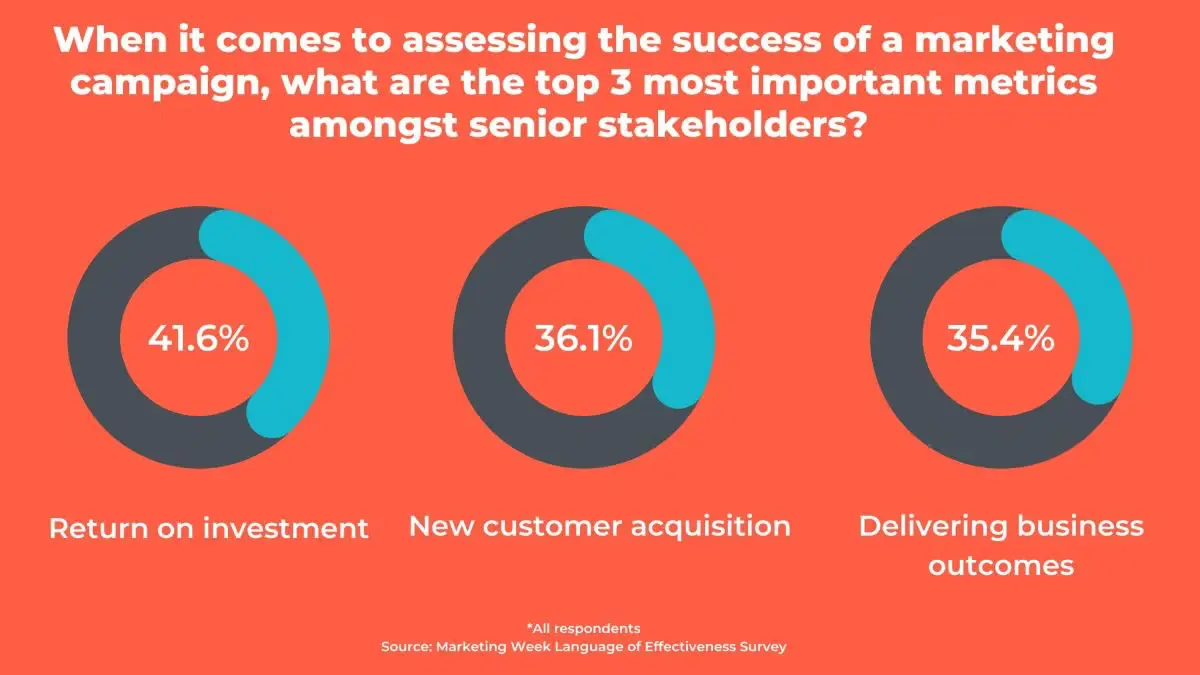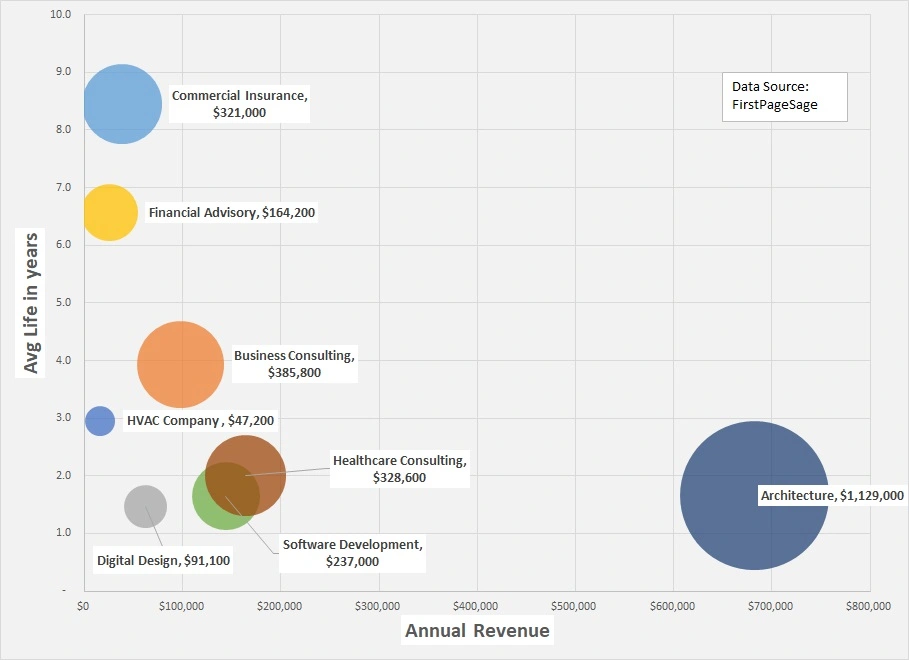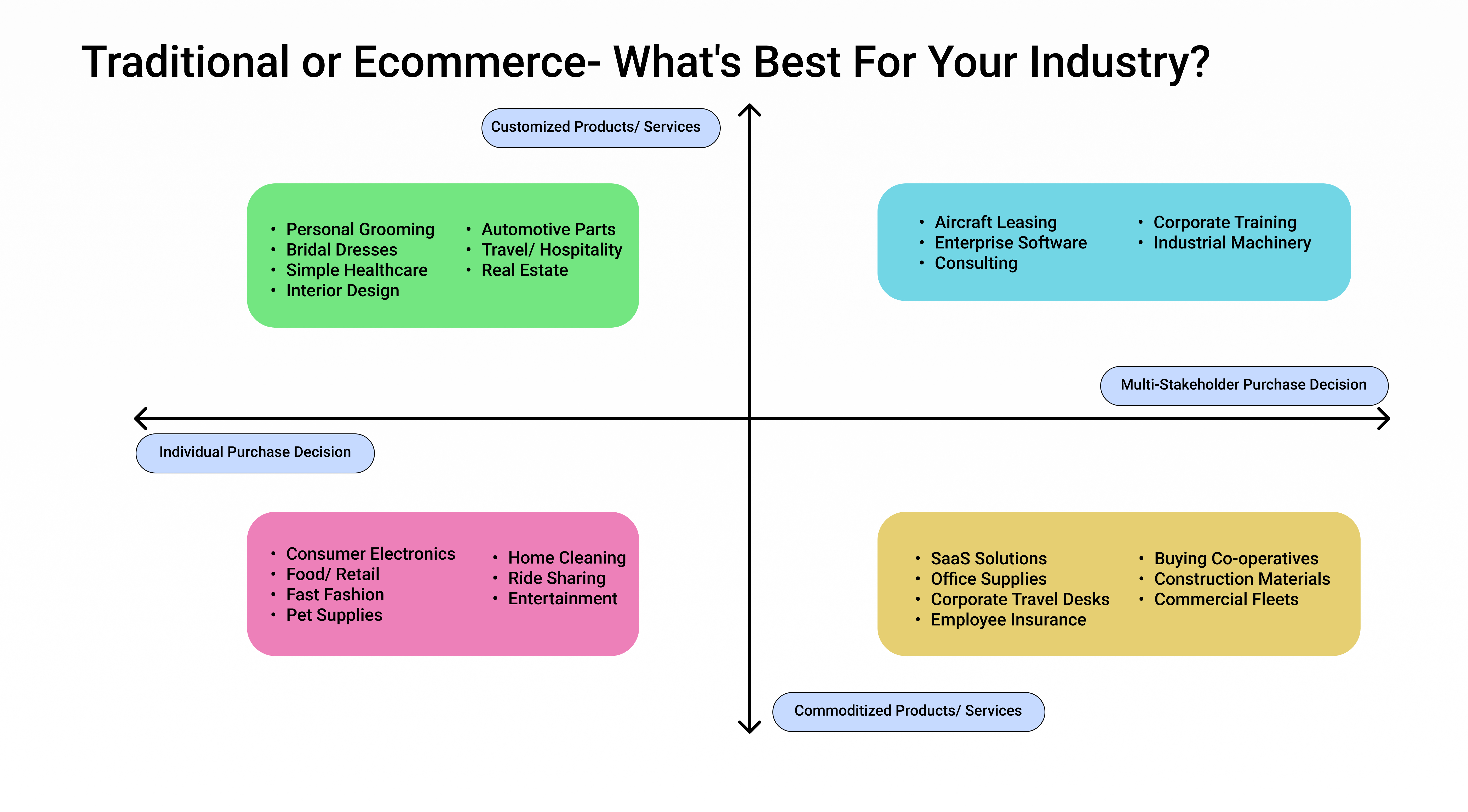What Is Marketing ROI (ROMI)? Why is it important? How do you build a system to track marketing ROI?


Table Of Contents
- Why do we need to track Marketing ROI?
- Defining Marketing ROI (ROMI)
- Options for Tracking Marketing ROI
- A Prescription for Tracking Marketing ROI.
- Special Case: Challenges to calculating Marketing ROI. Ecommerce is so easy, but what about non-ecommerce Businesses?
- Conclusion
- FAQ's
Why do we need to track Marketing ROI?
More than 100 years after American Retail Magnet, John Wanamaker said, “One-Half the Money I Spend for Advertising Is Wasted, But I Have Never Been Able to Decide Which Half”, the topic continues to eat away at the heart of Marketing Teams all over. That this problem has vexed so many through time, that in 1963, David Ogilvy weighed in on the topic in his book, Confessions of an Advertising Man- “But advertising is still an inexact speculation.”
Sadly, the same issues continue to vex the Marketing and Sales teams still.
With the rise in the number of channels and platforms in the digital world, the options continue to increase and a Marketing Team not on top of things can easily run through their Marketing budget without great results to show. The question most Boards and CXO’s are asking their teams is how they are ensuring that the money spent on advertising is generating business value efficiently. In a study of more than 300 B2B firms reported in MarTech in May 2023 in the US and UK, 41% reported that proving the value that Marketing brings to the table is a significant challenge (a subset of 27% said that they were facing overwhelming pressure). Similarly, another report published in June 2023 by Marketing Week-Kantar of more than 1,300 executives, “ROI top effectiveness metric demanded by C-suite” brings out the importance placed by Boards on Marketing ROI.

Image Sourced from Marketing Week- "ROI Top Effectiveness Metric Demanded by C-suite"
What has driven this trend is the recent economic headwinds most economies have been facing. The refrain being heard more commonly these days is, “The Brand Campaign is great, it’s creative, but how does it add to the bottom-line?” And it is here the terms, Marketing ROI, ROMI, ROAS, Performance Based Marketing are introduced into the conversation.
Traditionally, Marketing and Advertising were focused on Brand Building. Life was simpler, make your brand story coherent, creative; focus on targeting the right people and expose them to your story enough times; and they would start liking your product; which in turn should result in an increase in your revenues. Unfortunately, it has always been difficult to establish a direct correlation between Brand Awareness and financial results. Of course, there were times when we ran promotions which saw an increase in financial results, but even then, correlations were difficult to establish.
Then, as in Now, that does not detract from the need for building a brand. There are more than enough studies (interested readers can start with - Ailawadi, K. L., Lehmann, D. R., & Neslin, S. A. (2003). Revenue Premium as an Outcome Measure of Brand Equity. Journal of Marketing, 67(4), 1-17 ) which show that strong brands perform better than competitors, have more loyal users and enjoy premiums. But over time the need to be able to justify Marketing Spend has continued to increase.
Consider the following situations:
- What if you are a player with a B2B client base where the likability of a Brand is a smaller factor in decision making?
- What if you’re a small brand focused on growing? Don’t have the liberal budgets of your bigger competitors to build a brand?
- What if you are a large brand but are facing cutbacks in the budget with senior management pressurizing you on immediate revenue generation?
- What if you are a player who is working on tight budgets and needs revenue generation early. Lacking an in-house team, you want to work with an agency. How can you set their KPI’s? Can you work out a win-win deal that pays the agency only when your firm makes money?
In all the above cases, the common factor is the need to generate leads that can be tracked to see complete revenue or an objective (Trial Account sign ups, booking a Demo, Download of Marketing Material, Sign Up for Newsletter, etc.) The final objective of all the above is to arrive at a measure for Marketing ROI, so that in future objective data driven decisions to Distribute Marketing Budgets, Justify Marketing Spends, Measure Campaign Success and even perform Competitor Analysis.
Defining Marketing ROI (ROMI)
Traditionally, Marketing ROI has been defined as [Sales Growth-Avg. Organic Growth- Marketing Cost]/ Marketing Cost.
Scenario 1: Calculating ROMI for Single Use Customers through Lead Generation:
A simpler formula, more suitable for industries where purchases may be one-time or impulsive. Here we would define the formula as:
Marketing ROI (ROMI)= [Revenue Generated by Marketing- Marketing Costs]/ [Marketing Cost]
To understand more deeply about our different channels’ performance, it would be useful to not only look at overall performance but also dig deeper and look at the performance by channel, period, product line, etc.
Scenario 2: Calculating ROMI for Long Life Customers through Lead Generation:
What if you are in an industry where a client’s first transaction is low, but the client will continue to deliver over the years or will have repeat purchases. A scenario, quite common in the new startup world. In this case we will have to modify the formula slightly and use LTV in the numerator of the formula and modify Marketing ROI as:
Marketing ROI= LTV/ CAC
where,LTV = Lifetime Value of the Customer - The value the Customer will generate for you over their lifetime and can be calculated as ARPU (Average Revenue Per User)/ Average retention Rate.
Or,
LTV= ARPU/ Average Retention Rate= ARPU/ (1- Average Churn).
A further refinement, and something that we recommend is to calculate LTV based on Contribution (Gross Margin) rather than gross ARPU. This approach will impose stricter discipline and consider the dynamics of pricing and the margins available to play with.
Coming to CAC, it is defined as Customer Acquisition Cost or the average cost of Acquiring a customer.
Now, depending on your industry and the Competitive Landscape, you may want to dive deep and look at how you measure LTV or CAC, but overall, the above principles work. With time you would want to refine the model, look at building up multi-click Attribution models, but the important thing is to start with something rather than wait indefinitely to get the perfect solution.
Options for Tracking Marketing ROI.
The rise of Digital Marketing has opened a smorgasbord of options to pursue this. Yet, the answer is not simple. While it is possible to use any number of tools to track Lead Generation and conversion, except in the simplest cases, the problem still confounds most Marketing teams. Consider the following factors compounding the situation:
-
With the proliferation of Digital Media, the choice of platform is confusing.
Forget industry related portals or search engines, just a listing of the top 15 social platforms can be daunting.
-
Almost each Media/ Platform comes with its own set of lead generation tools and tracking measures.
As your team increases their digital footprint, the number of different tools to update and track from can very quickly become overwhelming? -
Consumer Behavior changes
OK, consider that we have finalized a mix of platforms and content types to generate leads. Great. But with time, and especially, if we are Marketing to the younger demographics, how do we know that our Media mix is still relevant? Unless you have a robust mechanism to track conversion and Marketing ROI, you may be left behind by nimbler competitors. -
cases where purchase cycles are long?
What do you do in the cases where purchase cycles are long? Where do you acquire clients online, and convert them offline? How can you track marketing efficacy? Most individual tools will give you simple metrics like CPM (Cost per Mille- Cost to achieve 1000 Impressions), or CPL (Cost Per Lead). User behavior and consequently conversion rates is different across different channels, for example a Marketing Team at a Car Dealership may spend USD 1000 to get 300 Leads from say Facebook, and a similar amount to get 50 leads from Google Ads. CPL alone may indicate that it is a no-brainer to opt for Facebook. But on closer analysis, it may just come out that the conversion from Facebook was finally 3 and the conversion for Google Ads was 4. Which would be the better medium?
Of course, you could just engage a Performance Marketing agency, set KPI’s for conversion and Marketing budgets and give them a go-ahead. Even then there are multiple variables where the best laid plans can be tweaked to refine and improve. Ultimately, no agency will take responsibility for final conversions. It will be unfair to expect them to commit to how your effectively your Sales Teams finally convert leads. So, yes, while we can always blindly mandate a target CPA to an agency, there are two hidden friction points:
-
Conflict between Marketing-Sales-Agency:
When leads come in but don’t get converted, or take time to convert resulting in missed opportunities, all three stakeholders can end up in a finger pointing exercise that detracts from the core objective of efficiently generating revenue. -
Setting a lax CPA Target:
We may end up leaving money on the table. If the targets are being achieved regularly and easily, it doesn’t mean that all involved parties have done very well, it may also indicate that the bar was set too low. Unless you have measured properly, how can you take data-driven decisions on which campaigns/ media/ platform to axe and which ones to promote more?
A CRM solution that can address all these issues can be a great starting tool for tracking Marketing ROI granularly.
A Prescription for Tracking Marketing ROI.
Given the importance of tracking Marketing ROI and the number of variables involved, an ideal setup for tracking Marketing ROI should have the following features:
Ease of Use-
Ideally a single tool that can collect leads from all sorts of platforms and make it easy to trace back a lead to at least the last Ad/ Content interacted with.Omnichannel-
Calls to Action maybe calls, form fills, emails, social messaging, WhatsApp, registrations for Demo’s, etc. The platform needs to be able to handle all such formats and provide integrated lead aggregation.Full Funnel Traceability-
The Leads received should be traceable from origin through to final loss or conversion.Ease of Collaboration-
Allow Marketing, Agency and Sales Teams to collaborate. Ideally a single platform that allows all three teams to collaborate on the same page.User Access Management-
Allowing multiple stakeholders on to the same platform should not mean that all users have complete access to data. A CRM which allows user level access control will prevent unnecessary security breaches.
Along with a CRM, the essential building blocks for proper Marketing ROI tracking would be having a disciplined Marketing Process for rolling out new content and Ads, regular collaborative meetings between all stakeholders.
Special Case: Challenges to calculating Marketing ROI. Ecommerce is so easy, but what about non-ecommerce Businesses?
The rise of ecommerce seems overwhelming.
Ecommerce platforms (and by extension other digital commerce platforms), where the entire buying journey is digital, makes it easy to track sources of leads and the resulting conversion. If your ecommerce platform is properly set up.
Readers from primarily ecommerce businesses can skim through this series of articles to learn more about the changing advertising landscape, different Search Marketing (Organic and PPC) options, explore Facebook, Instagram, Tiktok, YouTube, LinkedIn, WhatsApp, Telegram, Twitter, and Web IVR’s.
But then again, ecommerce is not everything. As of 2022, about 65% of the US population were shopping online, but still globally only about 21% of Retail Sales were happening through eCommerce. For industries which are slightly more complex That still leaves a substantial chunk outside of ecommerce. Increasingly, non-eCommerce businesses will move to a hybrid model of Online Acquisition- Offline Conversion and will be asking themselves questions of Marketing ROI. Traditional tools like Google Analytics/ Mix Plan/ Adobe Experience Cloud are only able to capture the online part of the journey. Of course, there are workarounds like setting predetermined conversion amounts but then except in the most basic cases these workarounds cannot capture any variations in sales prices. Overcoming this blind spot becomes the biggest challenge for non-ecommerce businesses and has created a dying need for an Omnichannel CRM that will capture the full buyer journey from origin to end.
Conclusion
Notwithstanding the importance of Brand Marketing, Lead Generation and Tracking Marketing ROI has grown in importance for Marketing Teams across the globe. Not only is it to answer questions from Senior Management on the justification of Marketing Spends, but also to be able to perform their jobs better.
With increasing complexity in the buying process, Marketing ROI monitoring cannot remain siloed as the baby of only the Marketing Team but needs a collaborative approach with Sales and Customer Service to track leads granularly from creation to final conversion.
With proliferation of possible avenues, and options for CTA’s, a CRM (especially if the last parts of your conversion journey is offline) is needed which can weave all these disparate pieces together and provide an integrated interface for managing leads.
Over the following articles in our series, we will explore different platforms (Search Engine Marketing, Social Media like Facebook, Instagram, LinkedIn, TikTok, WhatsApp, domain specific portals, Influencer Marketing and even a look at how tracking Marketing ROI can be implemented in traditional media like OOH, Radio, TV, etc). In the next article in the series, we will briefly do a State of Advertising Media globally and look at how different age-cohorts consume media differently before moving on to look at different media groups, ad and content options, CTA’s and explore options to track lead generation in each system.
Pronnel’s CRM provides an in-depth lead tracking from origin to final conversion. Whether it’s Search Engines, different Social Platforms, Email, portals, etc. With it’s super-configurability and industry standard templates, you can rollout your customized CRM platform to track end-to-end Marketing ROI while enabling your Sales Team with a tool to manage leads properly. Never miss a lead, never spend good money after bad on unproductive assets and allow your teams to collaborate. To find out more give us a call today to book a Demo.
FAQ’s
1- What is Performance Marketing? What is the difference between Performance Marketing and Brand Marketing?
Performance Marketing refers to the set of Digital Marketing strategies focused on delivering measurable quick results in terms of Sales/ Conversions by focusing on user behavior in the lower part of a conversion funnel. Often, firms starting out prefer focusing more on Performance Marketing as it yields quick results, helping them scale up faster.
Brand Marketing focuses on increasing brand equity through a positive emotional connect between a Brand and its users through advertising, product design, user experience and customer service. The objective is to increase user affinity towards the brand for easier sales. It is a long-term game and extremely difficult to measure objectively.
2- What is the difference between Digital Marketing and Performance Marketing?
Digital Marketing covers all forms of Digital media, content and strategies used online to touch all parts of the Marketing Funnel from Brand Awareness to demand generation to conversion.
Performance Marketing is a subset of Digital Marketing, focusing mainly on the lower part of the funnel. It is a strategy to deliver measurable results in terms of conversions at the best possible Marketing ROI.
3- Is Performance Marketing and Growth Hacking equivalent?
Growth Hacking and Performance Marketing are both focused on delivering growth, but they are slightly different things. Performance Marketing is focused on driving measurable results, such as clicks, conversions, or sales. It relies heavily on data and is analytics driven with the ultimate objective of delivering growth at the most optimized Marketing ROI or ROAS.
Growth Hacking on the other hand is focused on finding creative and innovative ways to grow a business quickly and efficiently, often through experimentation and testing. Unlike Performance Marketing, a Growth Hacking approach will not limit itself to areas where there is clear cut data but may even look at tactics such as viral marketing, influencer marketing, referral marketing.
The key point to remember is that both approaches focus on delivering rapid growth and a Marketeers question should not be which one, but how an optimal mix can help deliver growth profitable.
How do I determine a Customer Lifetime? My firm is very young. I have not been able to calculate Retention Rate? How should I calculate LTV?
Customer Lifetime, or, Customer Lifespan can be obtained by taking the average of all the Customer Lifetimes in your firm. A Customer Lifetime is the span between first invoice date and last invoice date. Alternatively, another approach, and one which is suitable to newer firms without long histories is to calculate using the Churn formula.
Average Customer Lifespan (ALC)= 1/ [Churn Rate], where
Churn Rate= [Customers at Period Start- Customers at Period End]/ [Customers at Period Start]
How Does Customer Lifetime Value (CLTV) change across Industries? How can I calculate LTV for my industry?
CLTV varies by industry, geography and even by what is the relative position of a firm in the industry. Therefore, looking at CLTV for an industry may not be the right number. For reference we have shared the CLTV’s observed across a range of industries across North America (sourced from FirstPageSage)

A better exercise would be to introspect and see how the trend in your CLTV is changing with time and find ways to improve it.
Which businesses are more suited for eCommerce vs Traditional Commerce?
Ecommerce has been making a lot of headway, and slowly, more and more businesses are finding it a viable option. However, there are qualifications. Rule of thumb, the lesser the complexity in purchase cycle (e.g. Number of Stakeholders, Length of Purchase Cycle), and the lower the complexity of the product (Customization, Payment terms- Bigger Ticket Transactions, etc), the easier is it for firms to move the transaction to ecommerce. In the below infographic, the Greener the sector, more is the scope of completing transactions online, whereas the deeper blue is the industry, the higher the offline conversion component.

Subscribe To Our Blogs
Get the latest blog notification into your email.